Time: 10:30AM – 5:00PM
Location: .4 mile from road
Lake Creek 08/01/2023 Photo Album
Note: In order to protect small high country streams, I have chosen to change the name for a few. This particular creek happens to be one of them. Excessive exposure could lead to crowding and lower fish densities.
Tuesday was my fifth visit to Lake Creek, and unfortunately I got off to a rocky start. On Monday evening in preparation for my day on the high elevation creek, I read my four blog posts from the previous trips. I was appropriately excited for a day of fly fishing.
I arrived at my usual parking space by 10:00AM, and I quickly assembled my old Sage four weight. Originally I considered using my Orvis Access eight foot four weight, but with flows higher than usual, I selected the longer and stiffer casting tool. The temperature was already in the seventies, as I sauntered down the trail. On a previous trip I hiked quite a distance, but I determined that farther was not better and opted for a .4 mile jaunt.
Sweet Pool
To begin my search for trout I knotted a peacock hippie stomper and parachute green drake to my line. The creek was flowing faster than I was used to, and the gradient in the early going made wading a challenge and minimized good holding spots for the resident trout. I managed a couple small browns barely longer than my six inch minimum on the green drake and hippie stomper, and then I needed to cross to access the better wading terrain on the west side of the creek. I took a step and carefully placed my foot on an angled rock, and my cleats instantly slid on the slant. I felt like I was surfing on the rock surface, and I managed to maintain my balance, but the current pushed me into a deep spot, and the creek water trickled over the top of my waders. My dry fly box was in the pocket of my wader bib, and it got submerged in the process causing my fly hooks to get wet. This unfortunate incident transpired within the first fifteen minutes, and needless to say, I was not pleased.
Off and Running
Love the Slick Below the Rocks
After the near dunking incident, I advanced quickly and hooked the same branch twice, in a ridiculous display of lack of awareness on my backcast. In the first incident I managed to free both flies, but the second transgression resulted in snapping off the trailing green drake. I took a deep breath and replaced the green drake with a purple haze, and within five minutes I repeated the errant backcast routine with another snagged branch. In frustration I cast forward with added power, and the flies released, but my follow through brought the rod in contact with a rock. I was momentarily pleased with my good fortune at recovering my flies, but after two casts I came to the realization that I broke the tip of my rod. I was not sure whether the snap occurred at the time of the powered forward cast or the follow through contact with the rock.
Shimmering Brown Trout
Now my only option was to hike back to the car to take down the broken rod and assemble a different wand. I chose my Orvis Access four weight and once again completed the .4 entry hike to my exit point. I resumed fishing for thirty minutes and built the fish count to four small brown trout, before I settled on a flat rock to eat my lunch. Between 10:30AM and noon I managed to land four small fish while making tremendous progress toward my step goal.
Tight Quarters
Mossy Background
After lunch I experimented with a Chernobyl ant trailing a beadhead hares ear, and one aggressive brown trout nabbed the Chernobyl. The dry/dropper failed to excite the fish, so I returned to a hippie stomper and green drake combination and very gradually boosted the fish count to nine. During this time I covered a significant amount of stream real estate, and promising locations failed to produce. The target spots were few and far between, and the netted fish remained in the six to nine inch range. I was ready to call Tuesday a rare failure and relegate Lake Creek to last place on my small stream list.
Shelf Pool Bonanza
Butter Brown
In a fit of despair I decided to once again try the dry/dropper approach. The hippie stomper was increasingly difficult to track, as dark clouds slid across the sky. I tied on a chubby Chernobyl with an ice dub amber body and added an iron sally and salvation nymph. Finally I began registering success, as the trout attacked all three flies with increased regularity. The fish count exploded to twenty-one, and the size improved with a twelve inch brown and several eleven inch jewels in the mix. Two trout clobbered the chubby, while several grabbed the iron sally, and the remainder snatched the salvation. The afternoon dry/dropper session represented the style of fishing that I associated with Lake Creek.
Promising Shelf Pool
Line Twister
Thick
A near dunking and broken rod tip surely placed a damper on the day, but I at least solved the riddle enough to land twenty-one wild fish, and I exceeded my step goal. It was a success in many ways.
Fish Landed: 21

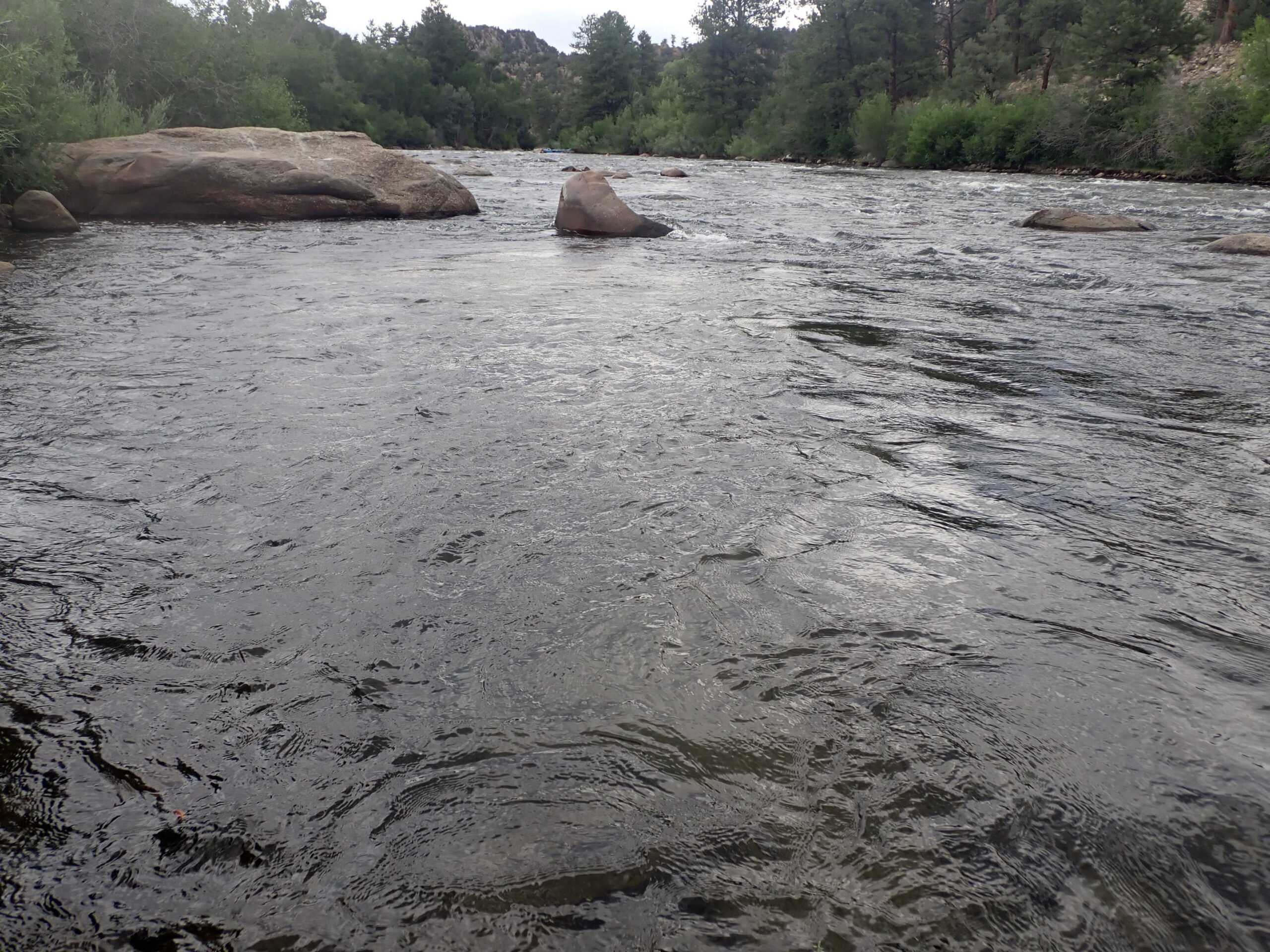 Perfect Trout Refuge During High Flows on the Arkansas River
Perfect Trout Refuge During High Flows on the Arkansas River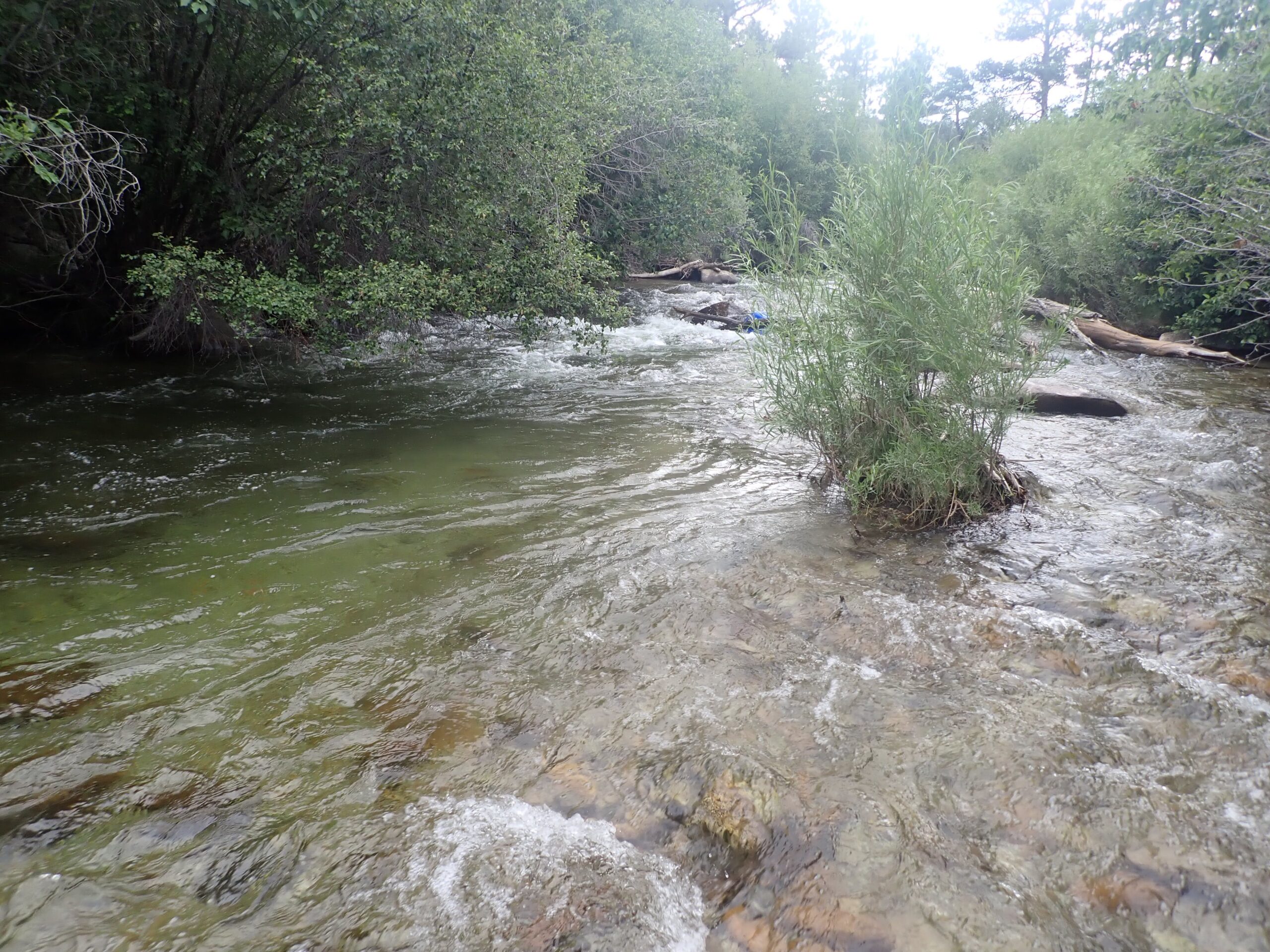 A Promising Deep Pool
A Promising Deep Pool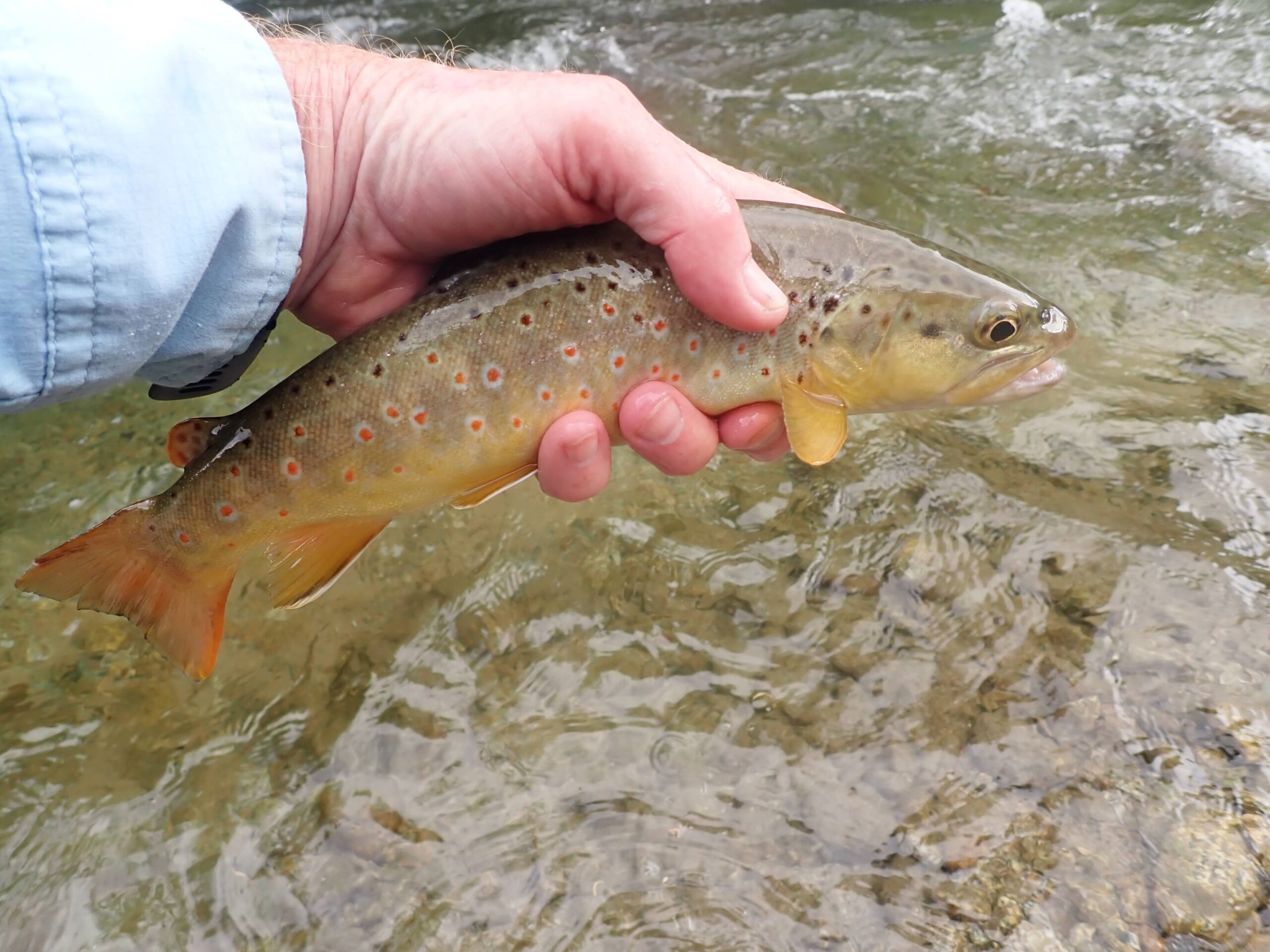 Butter Colored Brown
Butter Colored Brown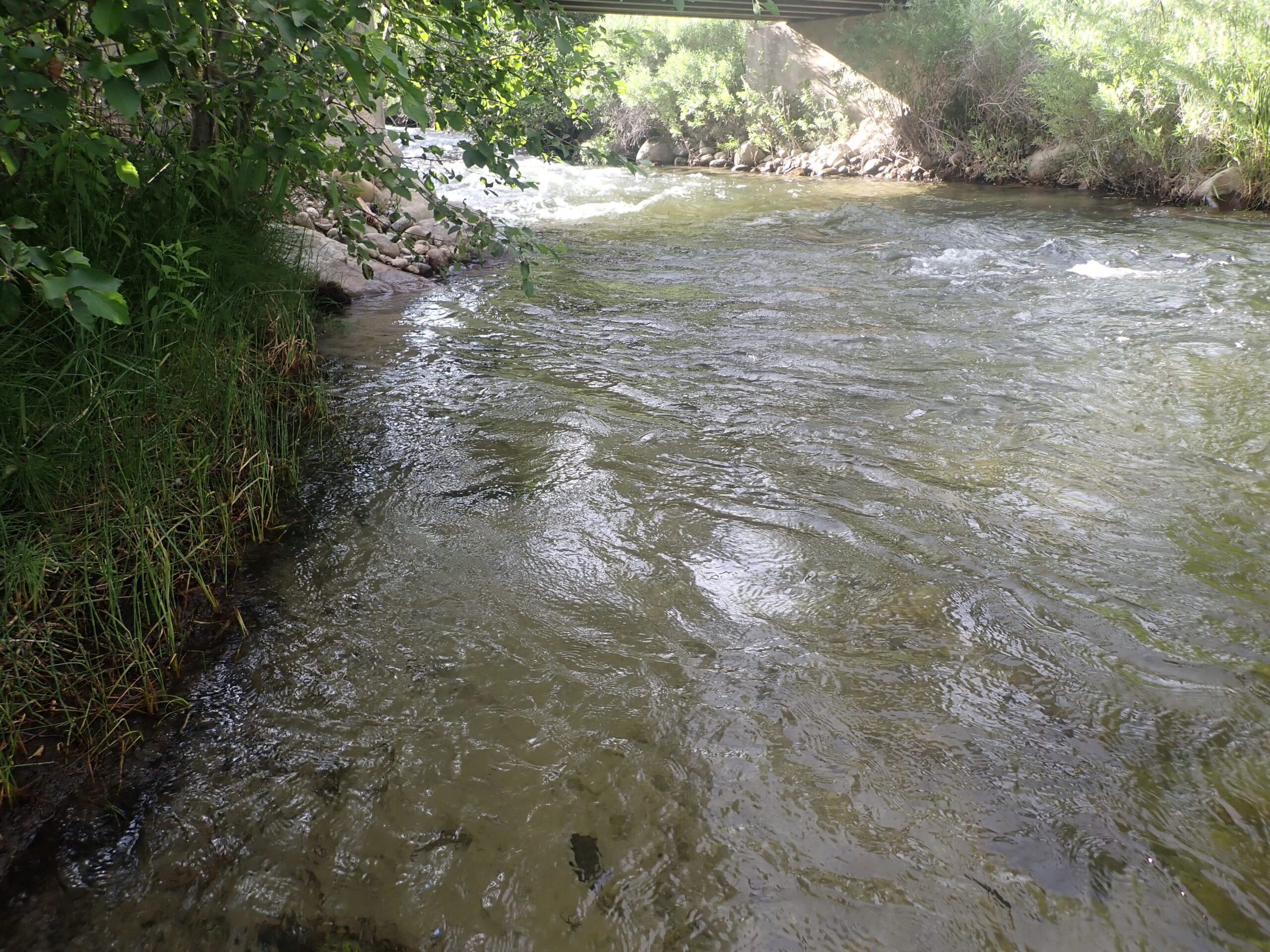 Very Productive Spot
Very Productive Spot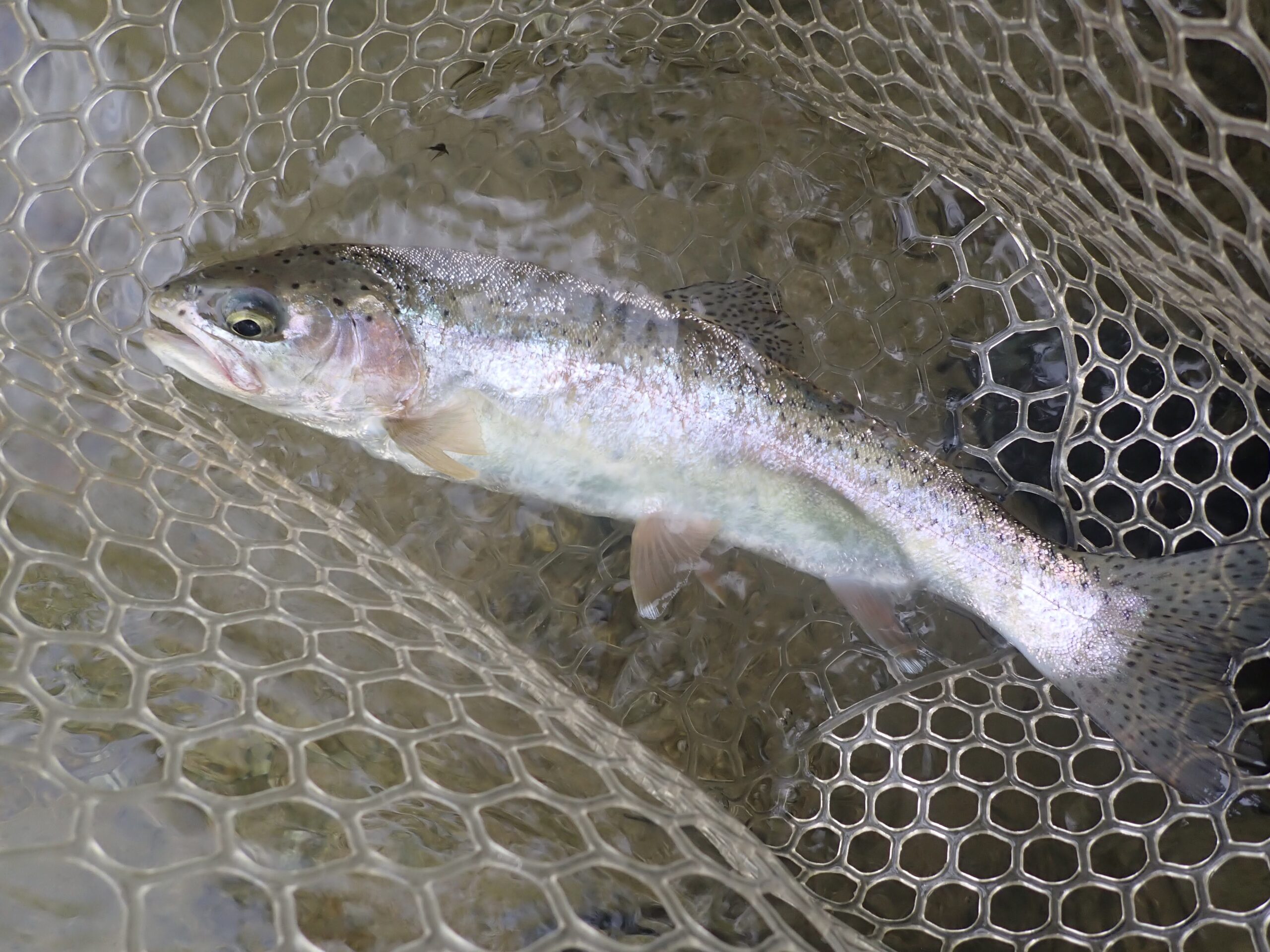 Surprise Rainbow
Surprise Rainbow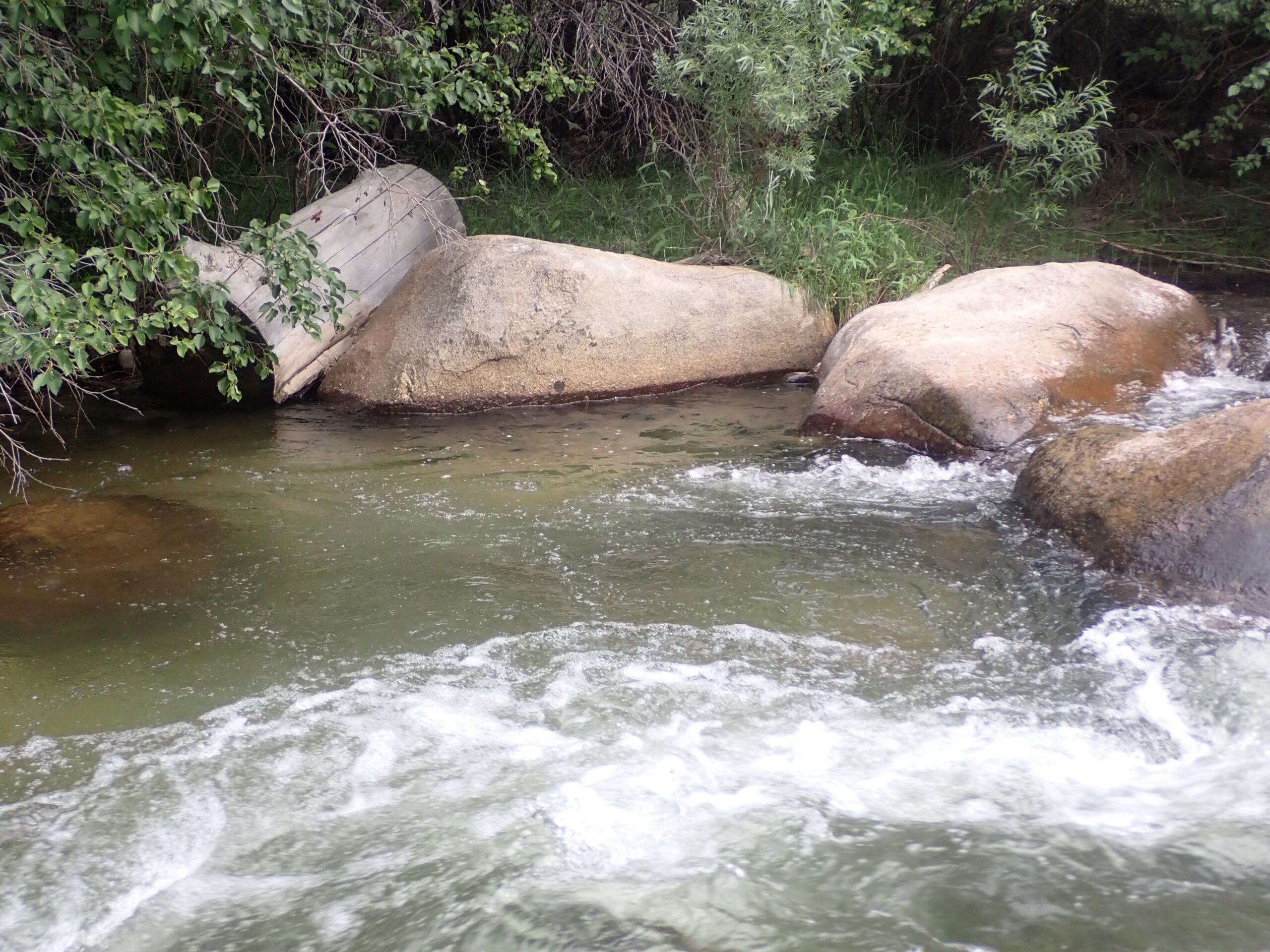 Zoomed in on Site of the Big Guy
Zoomed in on Site of the Big Guy